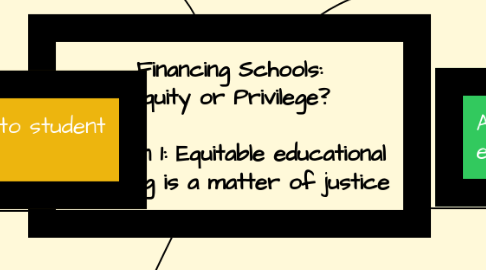Financing Schools: Equity or Privilege? Position 1: Equitable educational spending is a matter of justice
von Jennifer JarmanSandau


1. School funding impacts the school environment
1.1. School buildings in high poverty areas often cannot be adequately maintained
1.1.1. New vocabulary
1.2. The school environment affects the health and well-being of students and teachers
1.3. How can we expect students to learn in an environment that is not clean or safe?
2. School funding is linked to student achievment
2.1. An increase in school funding is a strong predictor of positive student outcomes
2.1.1. Research and prepare experiment
2.2. Underfunded districts often have a high teacher turnover, resulting in more teachers with fewer years experience
2.3. All students should be given the chance to succeed, not only the most priviliged
3. What can be done? We must address several issues:
3.1. Boundaries and Segregation
3.1.1. Text book, exercises 34, 35, 36, 37
3.2. Re-evaluate state Policies over local financial decisions
3.3. State aid formulas
3.4. Allocation of funds to districts with greater need
4. School funding is drawn from taxpayers
4.1. Property Tax Rates are set by local government
4.2. Schools in affluent areas receive more tax money than those in poverty-stricken areas
4.3. This method of funding schools creates inequality
5. All students have the right to a quality education
5.1. This is a matter of social justice
5.1.1. Midterm

